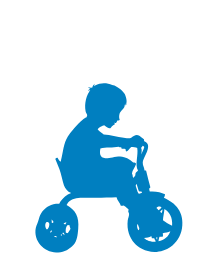Untreated VUR can lead to kidney damage
Vesicoureteral reflux (VUR) is a serious condition
It is important to know that your child may outgrow VUR. The average age when a child may outgrow VUR is five or six years old. Children are more likely to outgrow VUR with lower grades of Reflux. This is what your doctor or pediatric urologist calls spontaneous resolution. If your child has been diagnosed with VUR it is really important that VUR be treated to avoid long-term complications.
The likelihood of spontaneous resolution varies according to a child’s age, grade of VUR, and whether the VUR is on one ureter or both.
VUR Resolution Chart – Percent Chance of Reflux Resolution After A Specified Number of Years1.
American Urological Association
| Grade | Age | 1 Year | 5 Years |
| Grade 3 – One Ureter | 2-5 Years Old | 13.4% | 51.3% |
| Grade 3 – Both Ureters | 2-5 Years Old | 7.0% | 30.5% |
| Grade 3 – One Ureter | 5-10 Years Old | 10.8% | 43.6% |
| Grade 3- Both Ureters | 5-10 Years Old | 2.6% | 12.5% |
More severe grades of reflux are associated with lower rates of spontaneous resolution and a higher incidence of renal scarring.2
Continual UTIs can permanently damage the kidney
When a child has VUR, urine backs up into the kidney. Sometimes the urine contains bacteria that cause a urinary tract infection (UTI). Bacteria in the kidney can lead to damage over time, which may eventually lead to kidney failure and/or high blood pressure. Some kidney infections that develop suddenly can even be life threatening. The risk of kidney damage is greatest during the first 6 years of life. The goal is to find VUR early and prevent infection that could result in kidney damage.
Antibiotics are not an effective treatment for preventing kidney disease3
Treatment is important to protect the kidneys. Kidney infections may cause damage or scarring in the kidneys, which can result in poor kidney function and high blood pressure. It is important to note that antibiotics have been proven ineffective in reducing the rate of kidney infections and renal damage/scarring in children under 30 months of age and who had VUR grades 2-4.3











